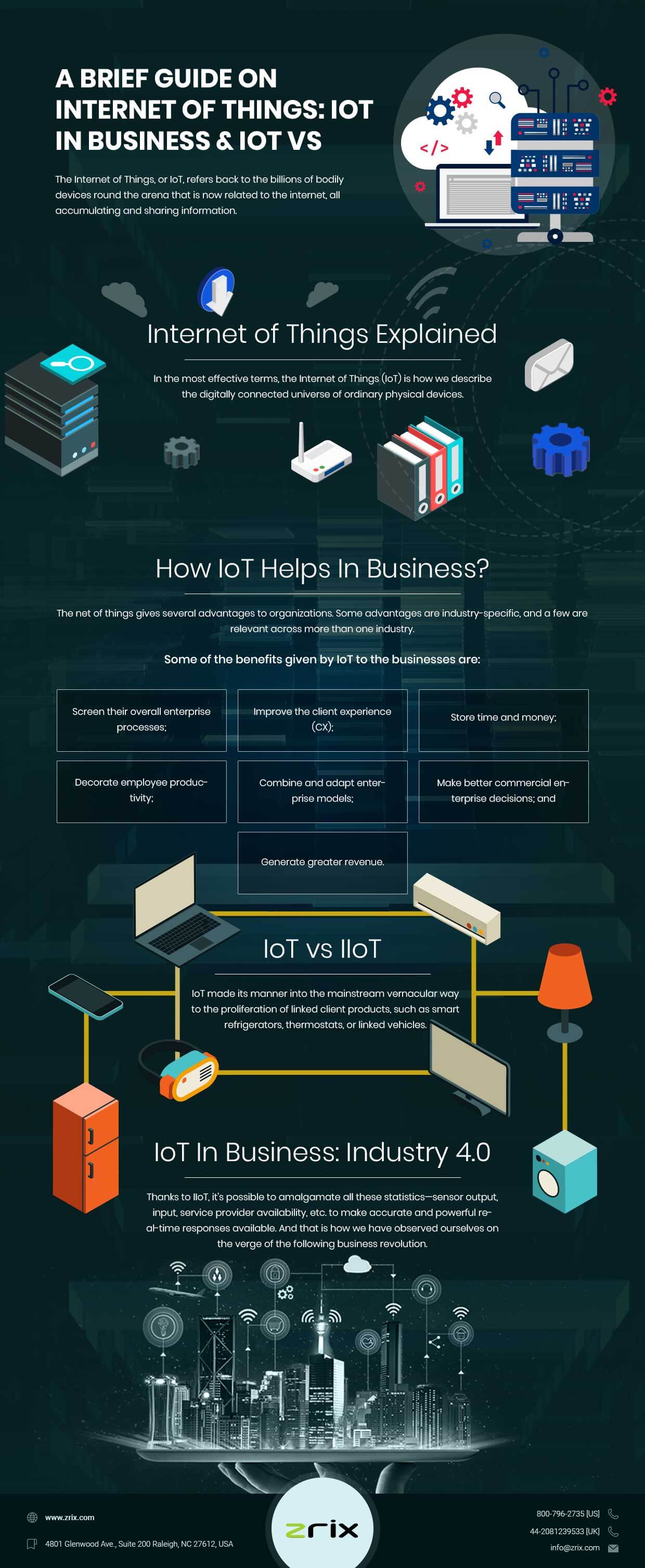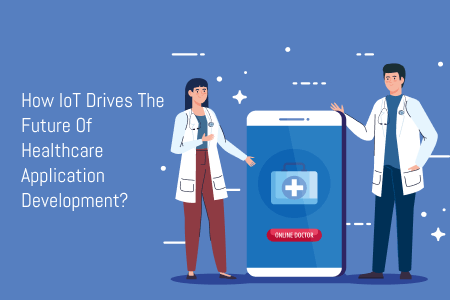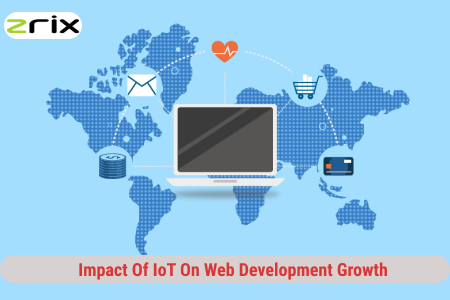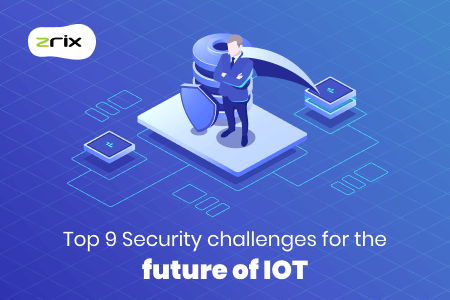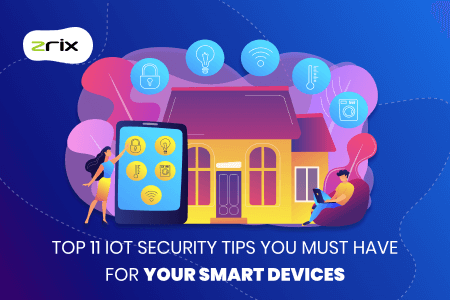The Internet of Things, or IoT, refers back to the billions of bodily devices round the arena that is now related to the internet, all accumulating and sharing information.
Thanks to the appearance of super-cheap pc chips and the ubiquity of wireless networks, it's possible to show anything, from something as small as a tablet to something as big as an airplane, using IoT.
Connecting up a lot of these different objects and including sensors to them provides a degree of virtual intelligence to gadgets that could be otherwise dumb, allowing them to talk real-time information without concerning a human being.
The Internet of Things is all about making the world a better and responsive place with smarter, flexible decision-making devices that digitally comes in our contact in the universe to make our life easier.
Quick Navigation
A lightbulb that may be switched on using a smartphone app is an IoT application, as it has a movement sensor or a smart thermostat in your workplace or a connected streetlight.
An IoT device might be as fluffy as a child's toy or as critical as a driverless truck. At a good bigger scale, smart cities initiatives are filling whole regions with sensors to help us apprehend and manipulate the environment.
Some larger objects may additionally themselves be full of many smaller IoT components, consisting of a jet engine that's now filled with heaps of sensors accumulating and transmitting records again to make itself running efficiently.
Kevin Ashton first coined the phrase 'IoT - Internet of Things' in 1999, but the technology took almost a decade to catch up with his vision.
According to the latest research of Business Insider, “There will be 64 billion IoT devices installed in the world by 2026, where companies and consumers will spend nearly $15 trillion on IoT devices, solutions, and supporting systems.”
Internet of Things Explained
In the most effective terms, the Internet of Things (IoT) is how we describe the digitally connected universe of ordinary physical devices. These gadgets are embedded with internet connectivity, sensors, and different hardware that allow communication and manage thru the web.
WHAT IS IoT? IoT makes once "dumb" devices "smarter" by giving them the capability to ship facts over the net, allowing the device to communicate with humans and other IoT-enabled things. An IoT ecosystem consists of web-enabled smart devices that use embedded systems, consisting of processors, sensors, and verbal exchange hardware, to collect, ship, and act on the information they gather from their environments.
Also Read: 5 Advances In The Internet Of Things That Will Change Business
HOW IoT WORKS? In a nutshell, IoT works in the following manner: Devices have hardware like sensors, for example, that collect facts. The statistics amassed by using the sensors is then shared thru the cloud and incorporated with the software programs. The software program then analyzes and transmits the records to users through an app or website.
How IoT Helps In Business?
The net of things gives several advantages to organizations. Some advantages are industry-specific, and a few are relevant across more than one industry.
Some of the benefits given by IoT to the businesses are:
- Screen their overall enterprise processes;
- Improve the client experience (CX);
- Store time and money;
- Decorate employee productivity;
- Combine and adapt enterprise models;
- Make better commercial enterprise decisions; and
- Generate greater revenue.
IoT encourages groups to rethink the methods they use in their corporations and gives them the tools to enhance their commercial enterprise strategies.
IoT touches every industry, including healthcare, banking & finance, retail, and manufacturing, agriculture, real estate, fashion industry, .
Types of IoT Applications you can make are as follows: wearable devices, smart homes, connected machines, smart cars, smart business systems, and many more.
Two topmost IoT application development platforms are AWS (Amazon Web Services) and Azure IoT Suite.
IoT vs IIoT
IoT made its manner into the mainstream vernacular way to the proliferation of linked client products, such as smart refrigerators, thermostats, or linked vehicles.
The distinction among IoT for the client or commercial enterprise functions is frequently delineated by way of the addition of an “I” — IIoT refers to the Industrial Internet of Things. But more or not, IIoT and IoT are the same at their basis and function.
IIoT is surely a business-centered subset of IoT that often leads to the gathering and distribution of much more complicated data than the purchaser version.
Also Read: How is IoT Disrupting the Way Marketing is Done
To solve any confusion, I think the differences between IoT and IIoT are really worth referencing, but for the functions of this text and our trends overall, we're going to discuss IoT, even when referencing its industrial use-cases.
“There are many Microtrends technologies that support IIoT. Mesh Networks, Artificial Intelligence, Digital Twins, Machine Learning, Cloud Computing, Edge Computing, and Data Analytics are highly trending in today's IoT business.”
IoT In Business: Industry 4.0
Thanks to IIoT, it's possible to amalgamate all these statistics—sensor output, input, service provider availability, etc. to make accurate and powerful real-time responses available. And that is how we have observed ourselves on the verge of the following business revolution.
In less than twenty years we have visible the evolution of IoT to IIoT. The capability of this era is evident. However, we can handily consider how it'd preserve to alternate and redefine the manner we stay and work over the direction of the following twenty years.
That is why it’s critical for enterprise leaders—and SMEs hoping to emerge as valid players—to recall how IIoT is remaking the principles of enterprise. This is especially important because we live in the age of Data, where every bit of data from consumer helps in business growth!
As an increasing number of related devices cause a constant accumulation of complicated raw information, soon organizations may have little choice however to rely on AI and aspect computing to pre-procedure and analyze it.
Final Words
IoT is developed from M2M communication, i.e., machines to machines communicating and connecting each other through networks but without any human interaction. M2M refers to connecting a tool to the cloud, dealing with it, and amassing data.
Taking M2M to the next level, IoT is a sensor community of billions of smart devices that join people, systems, and other programs to collect and share data.
If you have plans to develop IoT applications, then contact the best IoT software development services company in the world!
